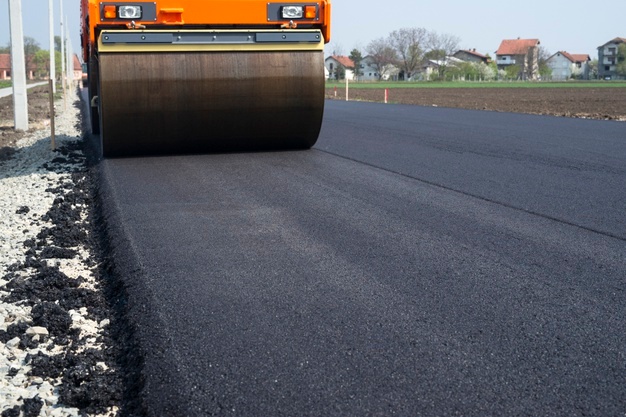General definition Gilsonite in Construction
Many construction processes are controlled by comparing the desired product, conceived during design, to the product produced during construction. The asphalt pavement construction process is often controlled in this manner. Control is often based on testing of components and assemblies of materials, the construction process, and the finished asphalt pavement. The success of the asphalt pavement construction project is usually judged based on how well test results produced during construction compare with criteria considered representing the desired product conceived during design.
Gilsonite has been the subject of exhaustive study to improve characteristics for use in paving. Various properties of asphalt are manipulated to produce a product that has the appropriate wear properties, rut resistance, fatigue and low temperature cracking resistance, adhesion strength, viscosity and pour point. Rut resistance is resistance to longitudinal surface depressions in the wheel paths. Adhesion strength is the maximum adhesion strength of the joint sealant and the joint reservoir, including but not limited to, between the
Crack sealer produced by the blend of bitumen with SBS, Gilsonite, rubber process oil, crumb rubber in special temperature and pressure and using as sealing cracks and joints in the asphalt pavement and parking also cement pavement. It is used to seal expansion and longitudinal and transverse crack and construction joints between concrete and asphaltic shoulder.
Gilsonite is one of the environmentally friendly products to repair and seal the asphalt. Gilsonite joint sealer and crack sealer is widely used in the world. The preferred embodiment of the invention employs a roofing adhesive or cement for filling the parking lot crack, either asphalt or concrete after it has been thoroughly cleaned either with air or water. The adhesive is preferably a modified bitumen rubber asphalt normally used for bonding roofing materials.
Gilsonite Construction Grade use in Asphalt and Pavement
Gilsonite is combined with coal and other ingredients as an additive in foundry sands to ensure the quality of the molded part. In sand case, by adding Gilsonite and asphalts at approximately one-third the level of sea coal the pitch had the same 900°F (482.2°C) volatiles. At this level, loss on ignition with asphalt, and Gilsonite was less than 50% of that obtained with seacoal and pitch while the Gilsonite and asphalts evolved less total gas when compared to seacoal and pitch Gilsonite had the least visible smoke generated in the laboratory tests. The lower gas evolution should reduce ventilation load on the pouring floor. The physical property relationships developed in new sand mixes were confirmed by sand using Gilsonite as an additive. Casting finish off a Gilsonite mix has been equal to Seacoal.
Shove resistance is resistance to permanent, longitudinal displacement of a localized area of the pavement surface caused by traffic pushing against the pavement. Heavy hydrocarbon that can be derived from, without limitation, natural asphalt (Gilsonite), shale asphalt, bottoms from a solvent deasphalting process, hard asphalt, blown asphalt, stiff refined asphalt, a flux. Asphalt is usually the base ingredient for the primer and the binder.
Benefits of Using Gilsonite Construction Grade
- Improved resistance to deformation;
- Improved economic characteristics of the road;
- Improved resistance to dents;
- Improved resistance to fatigue;
- Improved durability;
- Compensation for weak mixture;
- Compensation for weak aggregates.
Gilsonite construction grade is permitted for use in all climate zones.
Viscous petroleum bitumen BND 60/90 is an active binding component in repair and construction of pavements. Construction of asphalt pavements from hot and warm mixes includes such steps as preparation, paving operations, compaction of the mix, and final finishing work. The preparation phase involves checking the readiness of the roadbed including verification of conformance to design conditions; road location work; cleaning the roadbed from contaminations; installation of side stops.The turn of hot and warm mixes comes after appropriate preparation of the roadbed.
The content of Bitumen Modifier “Gilsonite” in the asphalt mix is established empirically, depending on the operating conditions and the required final characteristics of asphalt concrete. The percentage of a Gilsonite as added to the asphalt mix depends on the production conditions; usually, it ranges from 2.0% to 6.0% by weight of bitumen.


